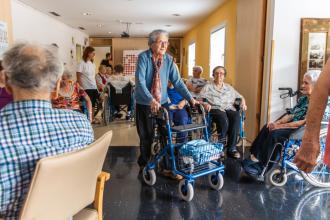Immunization of those with no or inadequate immunization records and the role of serological testing
Physicians often see patients who have no immunization records or whose records are incomplete. These may include immigrants, refugees, and sometimes health care workers. It may be possible to retrieve these records from a previous health care provider or public health unit in another province, but if records cannot be obtained the generally recommended approach is to offer the routinely recommended vaccines appropriate for the patient’s age group, as one would for an unvaccinated individual. The reasons for this are threefold: a large portion of undocumented individuals are unimmunized or inadequately immunized, vaccination of immune individuals is safe, and serologic proof of immunity may be unavailable or unreliable.
This article focuses on serological testing in association with vaccination decisions.
There are only a few situations in which routine testing for immunity following completion of a vaccine series among healthy individuals is indicated. These include:
• Hepatitis B immunity testing of health care workers, infants of carrier mothers, and household members and ongoing sexual partners of hepatitis B carriers.
• Varicella testing for some immunocompromised individuals following a dose of varicella vaccine.
• Rabies serology for animal handlers following a pre-exposure series of rabies vaccine.
Laboratory testing services are also available for testing select individuals (e.g., pediatric oncology) for select diseases for which there are available antibody assays and known correlates of serological protection. Practically, these include only hepatitis B, measles, and rubella. There are no established serological correlates of protection for pertussis, mumps, and human papillomavirus. Testing for immunity against poliovirus is not necessary given the global epidemiology of this disease, which is approaching eradication, nor are these assays readily available. Commercially available varicella antibody assays are insufficiently sensitive to reliably detect varicella–vaccine induced immunity, and the assays used in clinical trials that have been correlated to clinical protection are not available outside of research laboratories. Therefore, varicella immunity testing following immunization of select immunocompromised individuals is informative only if antibody is detected, and a negative serology result in a vaccinated individual does not imply susceptibility. Finally, only research laboratories have the ability to test for multiple serogroup serological protection conferred by meningococcal and pneumococcal vaccines, and Haemophilus influenzae type B titres.
Immunity testing requested most frequently in BC is for measles, mumps, and rubella. Such testing is neither recommended nor necessary either before or after vaccination, including for health care workers. The exception is rubella immunity testing in pregnancy, which is part of the routine prenatal screen, with MMR vaccine administered as a single dose for rubella protection postpartum in those whose serology indicates rubella nonimmunity. Rubella immunity testing in pregnancy is not required if previous laboratory results indicate immunity or if there is written documentation of a dated receipt of rubella vaccine. For measles and rubella, although there are serologic correlates of protection, immunity is robust and very high levels of protection are achieved in individuals who have received the recommended two doses of measles and one dose of rubella vaccine for those born in 1970 and later. Those fully immunized and tested many years following immunization may have titres below the protective threshold but remain protected if exposed due to a solid anamnestic response. Furthermore, immunized individuals with low antibody titres may be adequately protected through cell-mediated immunity, which cannot be measured by serologic tests and is assessed only in research laboratories.
Finally, immune individuals may be safely reimmunized as receiving MMR when already immune is associated with fewer adverse events than immunizing those who are susceptible; in such people, pre-existing immunity will interfere with replication of the live attenuated virus and systemic reactions such as rash and fever generally do not occur.
—Monika Naus, MD, MHSc, FRCPC
Medical Director, Immunization Programs and Vaccine Preventable Diseases Service
Additional reading
Amanna IJ, Carlson NE, Slifka MK. Duration of humoral immunity to common viral and vaccine antigens. N Engl J Med 2007;357:1903-1915.
Amanna IJ, Messaoudi I, Slifka MK. Protective immunity following vaccination: How is it defined? Hum Vaccin 2008;4:316-319.
BC Centre for Disease Control. Communicable disease control manual. Chapter 2. Immunization (see Section VII for vaccine-specific serological testing recommendations). Accessed 3 March 2016. www.bccdc.ca/health-professionals/clinical-resources/communicable-disease-control-manual.
Kakoulidou M, Ingelman-Sundberg H, Johansson E, et al. Kinetics of antibody and memory B cell responses after MMR immunization in children and young adults. Vaccine 2013;31:711-717.
Public Health Agency of Canada. National Advisory Committee on Immunization. Canadian immunization guide. Part 4. Active vaccines. Accessed 3 March 2016. www.phac-aspc.gc.ca/publicat/cig-gci/p04-eng.php.
hidden
This article is the opinion of the BC Centre for Disease Control and has not been peer reviewed by the BCMJ Editorial Board.

